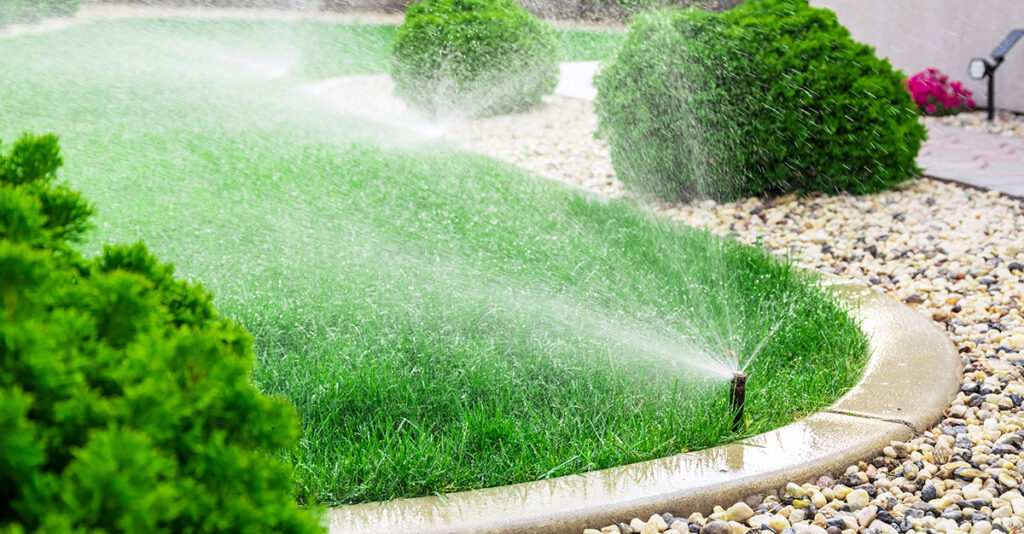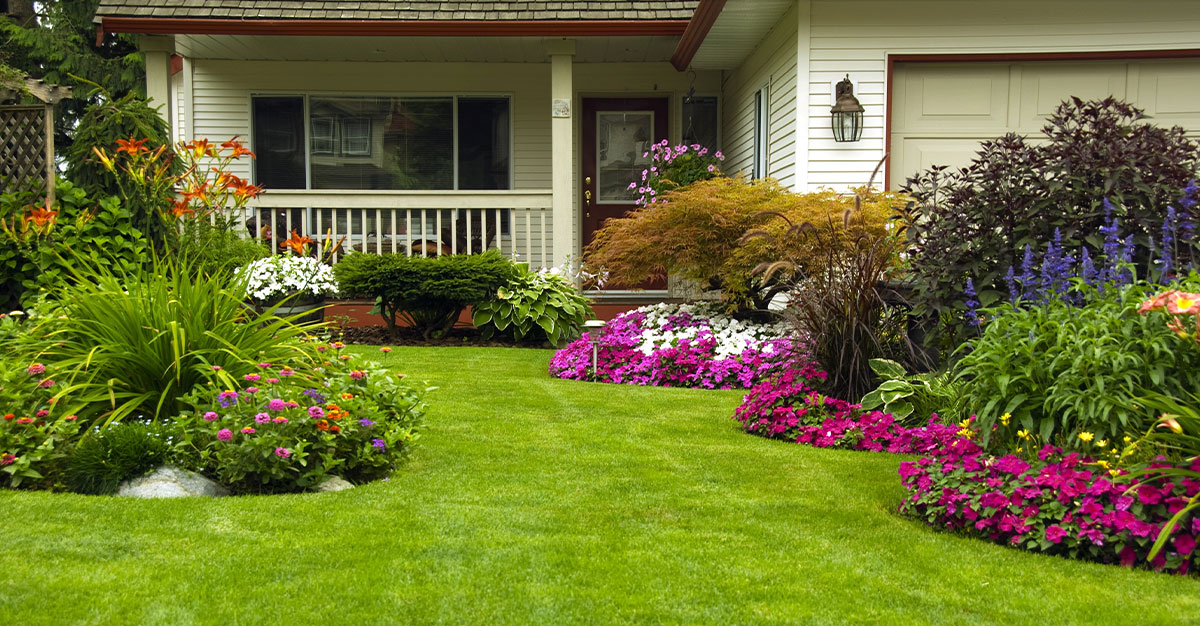A beautifully landscaped yard can significantly enhance the appeal of your home, providing a serene environment for relaxation and enjoyment. However, the demands of daily life often leave busy homeowners with minimal time for regular yard maintenance. Low maintenance landscaping is an ideal solution for those who desire a stunning yard without the constant upkeep.
In this article, we’ll explore 10 low maintenance landscaping ideas that are perfect for busy homeowners. These ideas not only save time but also can be cost-effective and environmentally friendly. By adopting these strategies, you can enjoy a lush, vibrant landscape without the hassle.
Why Low Maintenance Landscaping is Ideal for Busy Homeowners
Low maintenance landscaping offers numerous advantages, particulary for individuals juggling hectic schedules. Here are some key benefits:
Time-Saving
- Reduced Maintenance: Low maintenance landscaping designs typically require less frequent care. For instance, drought-tolerant plants and native species need less watering, fertilizing, and pruning.
- Automated Systems: Incorporating automated irrigation systems or a robotic lawn mower can significantly reduce the time spent on lawn care.
Cost-Effective
- Lower Water Bills: Choosing drought-resistant and native plants can substantially decrease water usage, leading to lower water bills.
- Less Chemical Use: Minimizing the use of fertilizers and pesticides not only saves money but also promotes a healthier environment for your family and pets.
Environmental Benefits
- Water Conservation: Using plants that are suited to your local climate and soil conditions reduces the need for supplemental watering.
- Reduced Carbon Footprint: Less frequent use of lawn mowers and other gas-powered equipment can reduce your carbon footprint.
By implementing these low maintenance landscaping ideas, you can create an outdoor space that is both beautiful and sustainable, all while fitting into your busy lifestyle.
Planning Your Low Maintenance Landscape
Embarking on the journey towards a low maintenance yard begins with meticulous planning. Here are the crucial steps to help you design a landscape that requires minimal upkeep:
Assess Your Yard and Existing Landscape
- Evaluate Soil and Climate: Understand the type of soil and climate you have. This will guide your plant choices and other landscaping elements.
- Inventory of Existing Plants and Hardscapes: Identify the plants and features you already have that can be retained or will need to be replaced.
Setting Realistic Goals and Budget
- Goal Setting: Define what you want to achieve with your landscape design. Are you looking to reduce maintenance time, save water, or create a more aesthetically pleasing yard?
- Budget Planning: Determine how much you are willing to spend. This will help in selecting plants, materials, and services that fit within your financial plan.
Essential Tips for Planning
- Understanding the Concept of Xeriscaping: Xeriscaping involves designing landscapes to reduce or eliminate the need for irrigation. This is ideal for dry climates and includes using drought-resistant plants and efficient watering systems.
- Choosing the Right Plants for Your Climate: Opt for plants that are native to your region, as they are adapted to the local climate and soil, requiring less water and care.
- Integrating Hardscapes: Incorporate elements like patios, walkways, and decorative stones, which require no water and minimal maintenance. Hardscapes can add visual interest and functionality to your yard.
By starting with a well-thought-out plan, you can ensure that your landscaping project is both manageable and successful. This foundational work sets the stage for implementing the low maintenance ideas that follow.
10 Low Maintenance Landscaping Ideas
1. Use Native Plants
Explanation of Native Plants and Their Benefits:
Native plants are species that naturally occur in your region. They are adapted to the local climate and soil, making them more resilient and less demanding in terms of water and care.
Benefits Include:
- Increased Wildlife Support: Native plants provide food and habitat for local wildlife.
- Reduced Resource Use: These plants thrive without the need for excessive watering or fertilization, saving both time and resources.
Examples of Low Maintenance Native Plants:
- For Dry Climates: Agave, Purple Coneflower, Black-Eyed Susan
- For Wet Climates: Blue Flag Iris, Joe Pye Weed, Swamp Milkweed
2. Integrate Perennials
Benefits of Using Perennials Over Annuals:
Perennials are plants that live for more than two years. Unlike annuals, which need to be replanted each year, perennials return each season, reducing the need for replanting.
Advantages:
- Longer Lifespan: Perennials establish deep root systems, making them more drought-tolerant and less needy in terms of watering and fertilizing.
- Seasonal Blooms: Many perennials bloom at different times, providing ongoing beauty throughout the seasons.
Low Maintenance Perennial Plants Suggestions:
- Hostas: Known for their lush foliage and tolerance of shade.
- Daylilies: Hardy plants with a wide range of colors.
- Sedum: Succulent perennials that thrive in poor soil conditions.
3. Drought-Tolerant Plants
Importance of Drought-Tolerant Plants in Reducing Maintenance:
These plants are specifically adapted to survive with minimal water. They help in conserving water and require less attention.
Popular Drought-Tolerant Plants:
- Lavender: Aromatic and pest-resistant.
- Sage: Both ornamental and culinary uses.
- Succulents: A variety of species that store water in their leaves, making them highly drought-resistant.
4. Ground Covers Instead of Grass
Replacing traditional grass lawns with low maintenance ground covers is an excellent way to reduce the time and effort spent on lawn care. Ground covers are low-growing plants that spread across the soil surface, providing excellent coverage with minimal upkeep.
Benefits of Ground Covers:
- Reduced Water Usage: Ground covers typically require less water than a traditional lawn.
- Less Mowing: Most ground covers do not need regular mowing, saving time and reducing labor.
- Weed Control: Dense ground covers can suppress weed growth by shading the soil and outcompeting weeds for nutrients.
Recommendations for Low Maintenance Ground Covers:
- Creeping Thyme: Fragrant, drought-tolerant, and attracts pollinators.
- Clover: Fixes nitrogen in the soil, improving fertility.
- Ajuga (Bugleweed): Produces attractive foliage and blooms.
5. Decorative Gravel and Rocks

Incorporating decorative gravel and rocks into your landscape design is a practical and aesthetically pleasing way to reduce maintenance. These materials are durable, long-lasting, and require virtually no upkeep.
Advantages of Using Gravel and Rocks:
- No Watering Needed: Unlike plants, gravel and rocks do not require irrigation.
- Weed Barrier: When combined with landscape fabric, these materials can serve as an effective weed barrier.
- Low Maintenance: Gravel and rocks retain their appearance without the need for regular care.
Ideas for Incorporating Decorative Gravel and Rock Gardens:
- Rock Gardens: Create stunning rock gardens using a variety of rocks, pebbles, and boulders. Integrate drought-tolerant plants for added interest.
- Walkways and Pathways: Design charming walkways using gravel or stone slabs. This not only provides a functional element but also reduces grassy areas.
- Dry Creek Beds: Simulate a natural dry creek bed using river rocks and pebbles. This feature can enhance drainage and add a unique element to your landscape.
6. Low Maintenance Ground Covers
Expanding on the idea of ground covers, selecting specific low maintenance options can make a huge difference in the upkeep of your landscape. Some ground covers are particularly well-suited for use in areas that would otherwise require grass or extensive plantings.
Types of Low Maintenance Ground Covers:
- Pachysandra: Evergreen leaves, thrives in shaded areas.
- Vinca Minor (Periwinkle): Produces attractive purple flowers and dark green foliage.
- Liriope (Lilyturf): Grass-like appearance with purple or white flowers.
Benefits of Ground Covers:
- Erosion Control: Ground covers help to stabilize soil and prevent erosion.
- Attractive Appearance: Many ground covers offer attractive foliage and blooms.
- Low Maintenance: These plants generally require less pruning and care than traditional lawns or flower beds.
7. Automated Irrigation Systems

Investing in an automated irrigation system can dramatically reduce the time and effort needed to keep your landscape green and healthy. These systems deliver water precisely where and when it’s needed, ensuring that plants thrive without requiring constant attention.
Importance of Efficient Watering Systems:
- Water Conservation: Automated systems can be programmed to water during the cooler parts of the day, reducing evaporation and saving water.
- Consistency: Plants receive consistent watering, preventing over- or under-watering.
- Convenience: Reduces the need for manual watering, freeing up your time for other activities.
How to Set Up and Maintain an Automated Irrigation System:
- Design Your System: Map out where irrigation lines, emitters, and sprinklers will be placed. Consider the water needs of different plant types.
- Install Components: Lay out the irrigation lines and install emitters and sprinklers. Hook up the system to a water source and a timer.
- Programming the Timer: Set the timer based on your region’s climate and the specific water needs of your plants. Adjust settings seasonally to account for changes in weather.
- Regular Maintenance: Periodically check for leaks or blockages in the system. Replace worn-out parts and ensure the timer is functioning correctly.
8. Choose Low Maintenance Trees and Shrubs
Selecting the right trees and shrubs is crucial for a low maintenance landscape. Opt for species that require minimal pruning, are resistant to pests and diseases, and thrive in your climate.
Benefits of Low Maintenance Trees and Shrubs:
- Reduced Pruning Needs: These species maintain their shape naturally, requiring less frequent trimming.
- Pest and Disease Resistance: Choosing resilient varieties can minimize the need for chemical treatments.
- Drought Tolerance: Trees and shrubs that are adapted to your local climate will need less supplemental watering.
Recommended Varieties for Different Regions:
- For Dry Climates: Texas Mountain Laurel, Creosote Bush
- For Wet Climates: Red Maple, Buttonbush
- For Temperate Climates: Dogwood, Japanese Maple
9. Mulching
Mulching is a simple yet highly effective way to reduce landscape maintenance. By covering the soil with a layer of organic or inorganic material, mulch helps conserve moisture, suppress weeds, and regulate soil temperature.
Advantages of Mulching:
- Water Conservation: Mulch reduces evaporation, keeping the soil moist for longer periods.
- Weed Suppression: A thick layer of mulch can prevent weed seeds from germinating by blocking sunlight.
- Soil Temperature Regulation: Mulch insulates the soil, keeping it cooler in summer and warmer in winter.
Types of Mulches and Their Specific Benefits:
- Organic Mulches: Examples: Wood chips, bark, compost, and straw. Benefits: Improve soil structure and fertility as they decompose.
- Inorganic Mulches: Examples: Gravel, pebbles, and landscape fabric. Benefits: Long-lasting and require less frequent replenishment.
10. Create Defined Edges
Creating defined edges between different areas of your landscape not only enhances visual appeal but also simplifies maintenance. Properly edged garden beds and pathways help keep mulch, gravel, and other materials in place, reducing the spread of plants into unwanted areas.
Importance of Defined Edges for a Clean Look and Easier Maintenance:
- Visual Appeal: Clean edges create a polished and well-maintained appearance.
- Preventing Encroachment: Edging keeps grass and ground covers from spreading into pathways and garden beds.
- Easier Mowing and Trimming: Defined edges make it simpler to mow and trim around garden beds and other features.
Tools and Materials for Creating Edges:
- Edging Tools: Manual Edgers: Round-point shovels or half-moon edgers for a clean, crisp edge. Mechanical Edgers: For larger areas or commercial use.
- Edging Materials: Plastic and Metal Edging: Flexible and durable options for creating clean lines. Brick and Stone: Provides a more permanent and decorative edge. Living Edges: Using plants like boxwood or liriope to create natural borders.
General Maintenance Tips
Even the most low maintenance landscapes need occasional attention to remain in top shape. Here are some general tips to ensure your yard stays beautiful with minimal effort:
Best Practices for Low Maintenance Yard Upkeep:
- Seasonal Inspections: Conduct seasonal checks to catch potential issues early, such as disease, pests, and irrigation inefficiencies.
- Efficient Watering: Use automated systems and water early in the morning to reduce evaporation.
- Minimal Pruning: Focus on removing dead or diseased branches rather than rigorous pruning.
- Fertilization: Apply a slow-release fertilizer in spring to support plant health throughout the growing season.
Seasonal Maintenance Schedule:
- Spring: Refresh mulch, inspect irrigation systems, and fertilize plants.
- Summer: Monitor watering needs, deadhead perennials, and check for pests.
- Fall: Rake leaves, clean up garden beds, and prepare plants for winter.
- Winter: Plan for the upcoming spring and maintain garden tools.
Conclusion
Low maintenance landscaping is a practical and rewarding approach for busy homeowners desiring a beautiful and sustainable yard. By implementing the 10 low maintenance landscaping ideas covered in this article, you can enjoy a vibrant landscape without the constant upkeep.
Remember, the key to success lies in thoughtful planning, choosing the right plants and materials, and adopting efficient maintenance practices. Embrace these strategies and transform your yard into an oasis that fits seamlessly into your busy lifestyle.
FAQs
What is the best low maintenance ground cover?
Creeping Thyme, Clover, and Ajuga are excellent choices, as they require minimal care and provide excellent coverage.
How often should you water low maintenance plants?
General Guidelines: Water deeply but infrequently, at most once a week or less, depending on the specific plant and climate.
Can low maintenance landscaping be colorful?
Absolutely! Drought-tolerant flowers like Lavender and perennials such as Daylilies can add vibrant colors to your landscape.
How do I start with low maintenance landscaping on a budget?
Step-by-Step Guide:
- Start Small: Focus on one area at a time.
- Use Native Plants: They are often more affordable and require less care.
- DIY Projects: Handle simple tasks like mulching and planting yourself.
- Recycle Materials: Use rocks, bricks, and other materials you already have.
By following these tips and embracing low maintenance landscaping principles, you can create a beautiful, time-saving yard that brings joy and relaxation for years to come.

